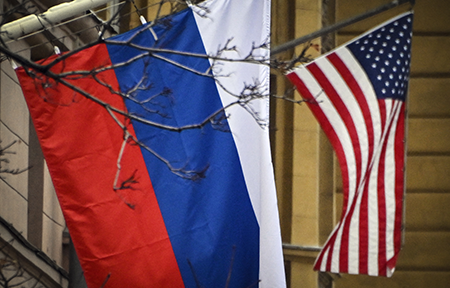"In my home there are few publications that we actually get hard copies of, but [Arms Control Today] is one and it's the only one my husband and I fight over who gets to read it first."
The Deal That Trump Can Secure With Russia
September 2025
By Daryl G. Kimball
Even before the start of his second term, U.S. President Donald Trump talked about how he could bring an end Russia’s brutal war on Ukraine. The issue dominated the hastily organized, poorly executed summit between Trump and Russian President Vladimir Putin in Alaska in August. So far, Trump’s improvisational, personalized diplomacy has failed to bring about a ceasefire and done little to bridge the gulf between Ukraine and Russia on terms for a durable and just peace.

At the same time, Trump has said repeatedly that he wants talks with Putin on the denuclearization of the massive Russian and U.S. nuclear arsenals. Putin has expressed interest in talks on nuclear arms control without insisting, as he did beginning in 2023, on a complete halt to U.S. military aid to Ukraine as a precondition.
Trump told reporters Aug. 25 that nuclear weapons were on the agenda in Alaska. “We would like to denuclearize. It’s too much power, and we talked about that.... but we have to get the war over with,” he said. For his part, Putin said the discussions were aimed at creating the “long-term conditions of peace between our countries,” including “agreements in the field of strategic offensive arms control.”
It is not enough, however, that Putin and Trump seem to understand the importance of maintaining common sense limits on their nuclear arsenals. They need to translate their words into pragmatic action, and soon, and not wait until there is a resolution to the war on Ukraine.
In less than six months, on Feb. 5, 2026, the last remaining treaty limiting the two largest nuclear arsenals—the 2010 New Strategic Arms Reduction Treaty (New START)—will expire. The treaty limits each side to no more than 1,550 deployed warheads on no more than 700 deployed long-range missiles and bombers and has provided greater predictability in the dangerous Russian-U.S. deterrence relationship.
As Trump said July 25 in response to a question about expiration of the treaty, “We are starting to work on that. That is a big problem for the world, when you take off nuclear restrictions.”
Unless the two leaders reach an interim deal to maintain existing limits, each side could quickly increase the size of its deployed nuclear arsenal for the first time in more than 35 years by uploading additional warheads on existing long-range missiles.
More nuclear weapons will not make anyone safer. The United States already has a devastating, survivable nuclear force that is more than sufficient to deter nuclear attack by China, Russia and any other nuclear-armed states. Any Russian and U.S. buildup would further destabilize the mutual balance of nuclear terror; strain the already costly, behind-schedule U.S. nuclear modernization program; and prompt China to accelerate its ongoing nuclear buildup.
Negotiating nuclear arms control with Russia is never easy. Near the end of his first term, in 2020, Trump failed to make headway with Russia on a new nuclear arms control agreement, in part because his national security team convinced him to try to include China in a three-way negotiation. China, which has a smaller arsenal, is concerned about its vulnerability to a first strike and values opacity, rebuffed the proposal. Russia responded by insisting that France and the United Kingdom also be involved.
This time, Trump’s team will need to craft a more practical and effective approach. First—because negotiating a comprehensive post-New START framework deal with Russia would require sustained talks over months, if not years—Putin and Trump should seek a simple, informal deal to maintain the existing caps after the treaty expires, as long as the other side does so. They could resume data exchanges and inspections, or simply monitor compliance through national technical means of intelligence. Unlike ending the war on Ukraine, such a deal could be secured in one meeting.
By agreeing not to exceed the current strategic nuclear limits, they could reduce tensions, forestall a costly arms race that no one can win, create diplomatic leverage to curb the buildup of China’s arsenal, and buy time for talks on a broader, more durable, treaty.
Second, Putin and Trump should immediately direct their teams to begin negotiations on a new more comprehensive agreement or agreements that address difficult issues with which the two sides have long struggled. These include: deeper verifiable strategic nuclear reductions; restrictions on intermediate-range forces and sub-strategic nuclear weapons; and limits on strategic missile defense, space-based weapons, and long-range conventional strike weapons.
To broaden the disarmament effort, Putin and Trump could call on China, France, and the UK to report on their total nuclear weapons holdings and freeze their nuclear stockpiles provided Russia and the United States pursue deeper verifiable reductions in their far larger arsenals.
If Putin and Trump maintain current strategic nuclear limits after New START expires, separate nuclear arms control from the complex challenge of ending Putin’s war on Ukraine, and launch talks on more ambitious nuclear disarmament measures, they can reduce the most immediate existential security threat facing the world.
